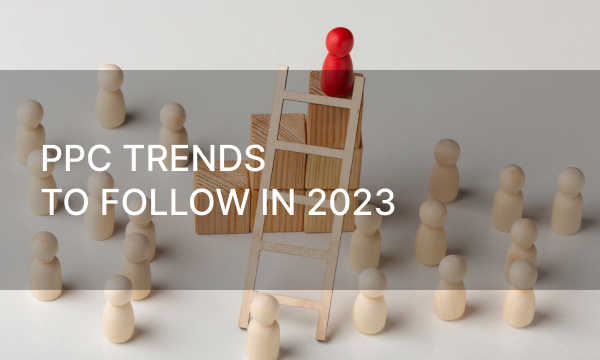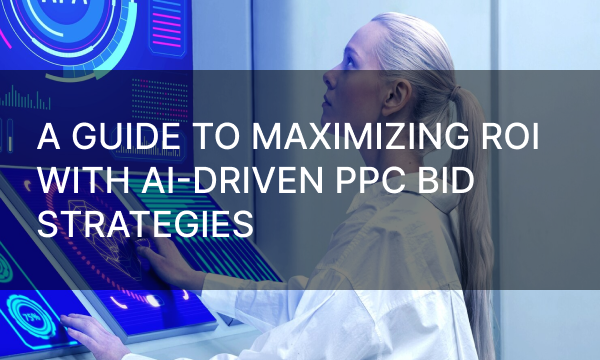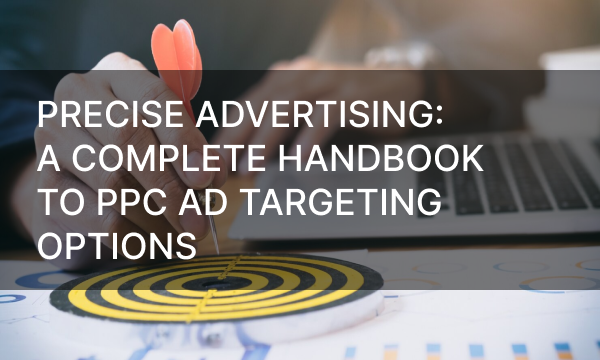Understand the importance of PPC campaigns performance management and the strategies to help you achieve maximum ROI.
In today’s highly competitive digital space, optimizing the performance of PPC campaigns becomes crucial to a sustainable ROI. The rise of AI tools and automation has transformed the landscape, requiring constant refinement and adaptation. Numerous privacy regulations have had a substantial effect both on data collection and insight generation.
To assist you on your journey towards optimization, we will explore nine techniques that can enhance your PPC campaigns. These strategies include analyzing performance by location, device and network, ongoing monitoring of the audience performance, leveraging negatives and negative lists, conducting A/B testing, conversion tracking, using automation and AI tools, and adhering to privacy regulations. By embracing these tactics, you can unlock the full potential of PPC ads, maximizing your ROI.
Using the latest tools and insights, you can optimize your PPC campaigns for the maximum impact and ROI. This article emphasizes the significance of improving the performance of ad campaigns, highlighting their crucial role in driving conversions and supporting sustainable growth. By learning to optimize your ad spend and targeting, you can enhance your PPC campaigns’ effectiveness and gain a competitive advantage in the market.
9 Areas To Maximize PPC Campaign Performance
 Photo by Eyestetix Studio on Unsplash
Photo by Eyestetix Studio on Unsplash
1. Performance By Location
PPC campaign performance can be analyzed by examining the location of your current and potential customers. There are distinct patterns across various states, regions, and even zip codes. This approach makes sense, as demographics can vary significantly from one location to another. By segmenting your audience using geographical data, you can customize your ad campaigns to better target specific areas. Be sure to adjust your campaign settings accordingly to enhance overall marketing performance.
By understanding how ads perform in various geographical areas, you can adjust your strategies to ensure that budget allocation matches the highest value opportunities. Metrics like CTR, conversion rates, and CPC across different locations allow you to identify both high- and low-performing areas. Using location data allows you to fine-tune campaigns by focusing them on high-performing regions, adjusting bids to increase visibility in those areas, and potentially reducing costs in underperforming regions.
Localized content results in higher engagement since it addresses the cultural nuances and consumer behavior in specific markets. Advanced targeting methods like geotargeting and location-based ad scheduling ensure your ads reach the right audience at the right moment. Monitoring and evaluating performance by location not only enhances ROI but also helps identify new market opportunities, enabling you to expand your reach strategically based on data rather than assumptions.
2. Performance By Device
While experiences across platforms and devices are becoming increasingly similar, user behavior differs greatly depending on the device being used. Mobile traffic still dominates, but desktops often drive higher conversion rates in many sectors. Regular analysis of device performance data is essential to gain insights into your audience and the environment in which they engage. This understanding enables you to tailor your messaging and user experience to better meet their needs. Integrating this data with other marketing channels can significantly boost the overall success of your campaigns.
3. Performance By Network
Choosing the right network can greatly influence the success of your PPC campaign. The Display Network should always be treated differently. It’s essential to separate Search Campaigns and Display Campaigns. The Search Network is effective at generating high-intent traffic, while the Display Network is particularly strong in enhancing brand awareness.
With the impending phase-out of third-party cookies, personalized and targeted ads will face limitations, which will help bring back contextual advertising. However, even when targeted accurately, display advertising can disrupt the user experience, so it’s critical to consider this in a creative approach and messaging. Moreover, it’s better to use both networks to reach customers and prospects at various stages of their journey, employing separate strategies, KPIs, and targets for each stage.
By examining data grouped by device type, you can learn trends in user behavior, such as devices with higher CTR or conversion rates, and adjust your bidding strategies. If a large share of conversions comes from mobile devices, you may choose to allocate a greater portion of your budget to mobile-focused campaigns and ensure your landing pages are optimized for mobile users, improving load times and overall user experience.
Device targeting enables tailored ad creation to meet the audience’s specific queries. Mobile ads may cater to immediate needs and local services, while desktop ads display detailed product information for users engaged in longer browsing sessions. Cross-device analytics can identify trends, such as the increasing significance of voice search on phones or the growing role of tablets in shopping, to inform ad strategy adjustments.
4. Audience Performance
Audience targeting involves segmenting the user base into groups based on commonalities defined by behavior or engagement levels. Audiences can serve as a means for observation rather than direct targeting, so it’s highly recommended to include as many relevant audiences as possible. Data will offer important insights into the most valuable segments and identify any underperforming segments to make informed changes.
Audience performance shows how well ads resonate with specific target groups and affect conversion rates. Learning the nuances of audience behavior, preferences, and engagement will help you customize your PPC campaigns effectively, ensuring ads are delivered to the most relevant users at pivotal moments in their decision-making journey. Advanced analytics methods, such as demographic segmentation and behavioral targeting, can pinpoint high-performing audience segments more inclined to convert, ultimately maximizing your ad spend and enhancing ROI.
5. Negatives And Negative Lists
When managing PPC campaigns, using negative keywords and forming negative lists can greatly improve performance. They prevent ads from being shown for irrelevant searches that could waste budgets and distort performance metrics. By carefully selecting negative keywords you can sharpen your targeting. This strategy boosts the chances of conversions by targeting a more relevant audience and enhances the campaign’s CTR.
Negative lists can be customized to suit various facets of a campaign. For instance, utilizing brand-specific negatives can help exclude competitors from search results, while removing irrelevant industry jargon ensures that the messaging connects with the target audience. It’s essential to regularly review and update these negative lists, as shifts in market dynamics, consumer behavior, and seasonal trends may require changes.
6. A/B testing
A/B testing allows you to make informed, data-based decisions that can significantly boost ROI. Creating two versions of an ad or a landing page, marked as version A and version B, and running them simultaneously is used to evaluate which one performs better on specific metrics. You can experiment with various headlines, ad copies, images, or call-to-action buttons to determine which option appeals most to the target audience.
Data from A/B testing can help you identify key elements that influence user behavior, allowing you to tailor your ad messaging. These tests can be incorporated into broader marketing strategies, facilitating ongoing enhancement and adjustments in response to evolving market trends and consumer preferences. A/B testing enables you to develop effective PPC campaigns that not only increase traffic but also transform prospects into loyal customers, boosting the overall growth and success.
7. Conversion Tracking
Precise conversion tracking is fundamental to successful PPC campaigns. In digital marketing, every aspect must be measurable, holding marketers responsible for the results of their advertising efforts. Conversion tracking should be central to both the planning and execution of media buying strategies. Unfortunately, it’s common to encounter PPC campaigns that lack conversion tracking or target the wrong endpoints.
Here are some strategic tips for getting conversion tracking right:
- Use the segmentation feature in Google Ads to quickly access a detailed breakdown of conversion types by campaign
- Ensure that you set the appropriate conversion goal for each campaign when using Target CPA or Target ROAS bidding strategies
- Create and utilize custom columns to incorporate various conversion points and performance metrics, such as CPA, ROI, or ROAS
Accurately measuring user actions after they interact with ads gives insights into which PPC campaigns perform well and which need improvement. Attributing conversions to specific ads, keywords, and campaigns allows for a precise measuring of ROI. This may help you make such decisions as reallocating budgets to high-performing ads, adjusting bids for converting keywords, or refining ad copy to engage your target audience.
8. Automation And AI
The incorporation of automation and AI into PPC campaign management is transforming the digital marketing landscape, leading to remarkable advancements in performance. Automation simplifies numerous elements of advertising, such as bidding strategies and ad placements. AI-driven algorithms help identify patterns and trends that enhance your targeting strategies, ensuring that ads reach the most relevant audiences.
These advanced systems can dynamically optimize bidding by adapting to shifts in competition, market trends, and user behavior, maximizing ROI. AI improves ad creative testing, allowing you to use machine learning to identify the most appealing ad variations. Using predictive analytics, you can anticipate potential outcomes based on historical data to make useful adjustments that will boost PPC performance.
9. First-Party Data and Privacy Regulations
As the privacy policy tightens, the reliability of third-party data decreases. Prioritizing first-party data has become essential. Creating and managing extensive customer lists with complete transparency will help you achieve more precise targeting and personalized communication, all while adhering to privacy laws and enhancing the effectiveness of PPC campaigns. However, you must ensure your methods for collecting first-party data comply with these regulations, thereby fostering user trust and loyalty.
Conclusion
In the ever-evolving world of PPC advertising, the focus on continuous improvement is essential. By consistently updating and refining your strategies in these nine key areas, you can achieve long-term success and enhance the performance of your PPC campaigns. Keeping up to date with search engine changes and trends is essential for adapting ad campaigns.
The rise of AI tools and automation has changed the rules of the game, so use them wisely. At the same time, the privacy policy emphasizes the need to rely on first-party data. It’s crucial to track and adjust bids based on performance data to allocate budgets more effectively by focusing on successful keywords and limiting spending on underperforming ones.
These strategies highlight the significance of continuous adaptation in PPC advertising. As the digital landscape evolves, using outdated technology can hinder your success. Therefore, you should remain flexible, regularly updating your tactics to match changing user behavior and technological progress. Ultimately, the success of PPC ads depends on commitment to ongoing adaptability and readiness to test and refine your ad strategies.



